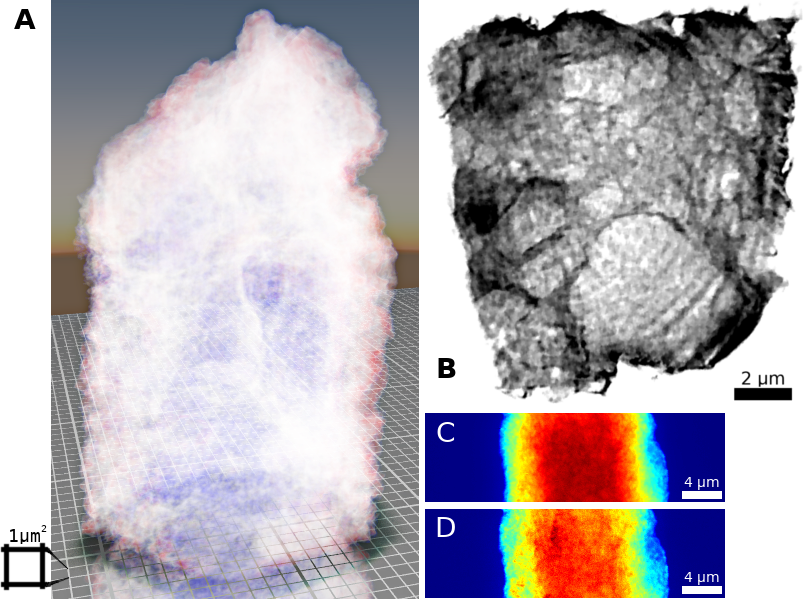Characterizing the 3-Dimentional Structure of Hydrodesulfurization Catalyst Particles
Hydrodesulfurization (HDS) is a catalytic process widely used to remove sulfur from refined petroleum products [1 , 2]. One purpose for removing the sulfur is to reduce the toxic sulfur dioxide emissions resulting from burning oil-based fuels. Another important reason is that sulfur, even in extremely low concentrations, poisons the noble metal catalysts - platinum and rhenium, in the catalytic reforming units downstream. Given the more stringent legislation, and the changing composition of crude oil which may contain compounds that are more difficult to desulfurize as global petroleum supplies dwindle and processing of "dirtier" feeds increases [1], there are large industrial and academic efforts to improve HDS catalysis.
HDS catalysts are composites consisting of nickel- or cobalt-doped molybdenum or tungsten sulfides supported by porous alumina particles. The porosity in these particles (the typical scale of which varies from a few nm up to several μm) is essential for the large molecules to diffuse to and from the active sites, therefore understanding its structure is key for optimizing the catalyst's performance. The relationship between the pores' geometry and the active particles' locations is of importance as well.

Due to the enormously diverse scales, structure sensitivity to the environment and to manipulations, and very fine structural details, it is extremely difficult to characterize these structures using well established techniques. We make use of state-of-the-art synchrotron 3D imaging (holotomography, ptychographic nano-tomography, fluorescence tomography) to characterize the porous structure and the elemental distribution in these particles on multiple scales, and other advanced techniques (such as scanning nano-beam diffraction) to determine the orientational relation between the active particles and the support structure. Also, computational techniques are being developed to process these kinds of data for the more general use cases.
[1] T.A. Pecoraro and R.R. Chianelli, Journal of Catalysis, 1981, 67, 2, 430-445
[2] R. Prins, M. Egorova, A. Röthlisberger, Y. Zhao, N. Sivasankar, and P. Kukula, Catalysis Today, 2006, 111, 1-2, 84-93
[3] J. C. da Silva, K. Mader, M. Holler, D. Haberthür, A. Diaz, M. Guizar-Sicairos, W. C. Cheng, Y. Shu, J. Raabe, A. Menzel, and J. A. van Bokhoven, ChemCatChem 2015, 7, 3, 413-416